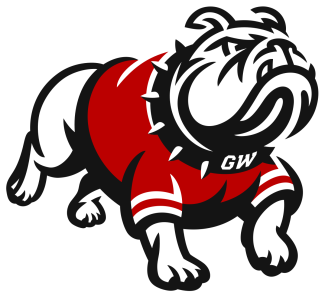04:00 PM
Apr 29



04:00 PM
Apr 29


07:00 PM
Apr 29


07:00 PM
Apr 29


07:30 PM
Apr 29


© 2025 USA Lacrosse. All Rights Reserved.
T
he New York Yankees and Boston Red Sox. The Dallas Cowboys and Washington Redskins. Duke and North Carolina. Michigan and Ohio State. The Toronto Maple Leafs and Montreal Canadiens.
These teams are forever linked together. The records don’t matter; players seem to give that extra effort in those games. When those contests are played, the fans know something special will happen.
Major League Lacrosse doesn’t have the history those other leagues have, and the league isn’t as big as either, but there was a natural rivalry in place from the very beginning that has only grown over time: the New York Lizards against the Chesapeake Bayhawks.
“It’s what the game’s all about,” Lizards head coach Joe Spallina said after his team’s 2017 season-opening victory April 22 against the Bayhawks. “You look at all the kids here, you look at the atmosphere, the Long Island-Maryland rivalry and battles. Its what’s great about this sport. They’re missing guys, we’re missing guys. At the end of the day though, it comes down to going out and playing. The guys play with a lot of emotion because it’s bigger than the game. I think that’s what you see, guys going that extra mile and making those extra hustle plays. It’s the league the way the league should be played.”
B
altimore and Long Island are known as the nation’s lacrosse hotbeds, so there certainly is bragging rights over which region is the best. What makes the games truly matter, however, is the success each franchise has enjoyed and the stakes that are typically on the line.
No team in the league has won more championships than the Bayhawks (five). The Lizards are tied with the Barrage (no longer operating) for second, with three championship victories.
The teams have met five times in championship games, including the first three in league history and four of the first five.
“Both organizations are used to winning,” said Bayhawks head coach Brian Reese, a Towson, Md., native. “A lot of proud people. Lot of great competitors. Every time we meet, it’s a great game.”
“It’s awesome,” Lizards faceoff specialist Greg Gurenlian added. “It’s always heated. The players, we all know each other. We’re two teams that try to build off of core guys and keep them for a long time, so we’ve been going at it for a long time.”
Players have moved back and forth between New York and Chesapeake on a number of occasions. Brian Spallina, Nicky Polanco, Mark Millon, Casey Powell and John Grant Jr. have all played for both franchises.
A new wrinkle to the rivalry in 2017, however, was the change of teams by Joe Walters. The former Bayhawk wasn’t traded to New York, but opted to switch teams with the inaugural Player Movement option, which allows players who have been in the league for five consecutive seasons with an expiring contract the opportunity to relocate to a different market, with the new team requiring to give predetermined compensation in return.
“When I entered free agency, I had no intention to leave Chesapeake,” Walters said at the time of the move in November. “It’s really going to do what’s right for you, and New York was the best fit.”
After the 2017 season opener, Reese admitted it was strange to see Walters in a different uniform, but was able to joke about the situation.
“He became just another Lizard. He’s the bad guy now,” he said. “We’ll try to take it to him every game. We wish him the best of luck.”

PHOTO BY JERMAIN RANGASAMMY/PRETTY INSTANT
New York Lizards midfielder Joe Walters (1) became the latest player to suit up on both sides of the Bayhawks-Lizards rivalry when New York opened the season April 22 at Chesapeake.
The matchup also featured the two most popular players in the game: New York midfielder Paul Rabil (who grew up in Gaithersburg, Md.) and Chesapeake midfielder Myles Jones (from Huntington, N.Y., on Long Island).
Jones admitted to looking up to Rabil, even if he is the opposition.
“Paul was someone I watched when I was younger,” he said. “I remember when I was in seventh grade and watched Paul play in college. It was a cool experience for me at Hofstra and they played in the playoffs. Anytime you can share the field with him, it’s a cool feeling. I get to up my game with the world’s best.”
Rabil, in his 10th season in the league and third with New York, also respects the Lizards’ antagonist.
“They’re a founding team,” he said. “They’re always super competitive. It comes from the top down with their owner, Brendan Kelly, through their front office, Dave Cottle and Brian Reese, now coaching. There’s not a guy with more fire on the sideline.”
W
hile New York and Chesapeake have squared off for the biggest prize the league has to offer on numerous occasions, Spallina did not want to exclude the Boston Cannons — another original six franchise — from the rivalry conversation.
When asked if he thought the Lizards and Bayhawks was the top MLL rivalry, he responded, “I would say this one and us and Boston.”
If Cannons attackman Will Manny had to label any games as rivalries, he would choose New York and Chesapeake.
“[MLL] is small to consider any game a rivalry, he said. “But from my experience, especially with internal trades, New York and Chesapeake are two of those games that are always circled and emphasized, whether it’s the front office, coaches, or guys on the team.”
Boston has one championship of its own, and the team has battled frequently with both squads in the playoffs.
The Cannons have squared off with the Lizards three times, including the 2015 semifinals, which saw Boston outscore New York 8-3 in the fourth quarter to force overtime, only for the Lizards to eventually win the game. Adding to the intrigue in recent years was the blockbuster trade that sent Rabil to the Lizards in exchange for a package that included Hewlett, N.Y., native Max Seibald.
Boston has taken on the Bayhawks even more frequently, six times to be exact, including three straight seasons from 2010 to 2012. In 2011, the teams played in the famous “Hurricane Game,” a 14-13 semifinal victory earned during the middle of Hurricane Irene.
Manny, a Long Island native and UMass graduate, said being able to play a home game away from the home market makes those contests extra special.
“My family has about 50 or 60 people at [the Lizards] games and a big party or tailgate. I want to tell them to stop because I haven’t won a game in New York in three years,” he joked. “But your heart is always racing. They have been one- or two-goal games. You have to win close games and early games.”
T
he Cannons took on Chesapeake on Saturday in the only matchup between the two teams this season. True to form, it was a thriller. Sparked by backup goalie Niko Amato and midfielder Myles Jones, the Bayhawks rallied back from a five-goal deficit to win 19-18. It came two weeks after Chesapeake met New York for the only time this season. This gives these games extra emphasis as tiebreakers — which proved to be important in 2016 when seven teams tied for first in the standings — are at stake.
Any combination of New York, Chesapeake or Boston makes for must-watch MLL. The Lizards and Cannons play each other twice this season — May 20 in Boston and July 20 in New York.
“When I was in Boston, I hated playing both teams,” Rabil said. “It’s just a difficult match, but we have fun.”
